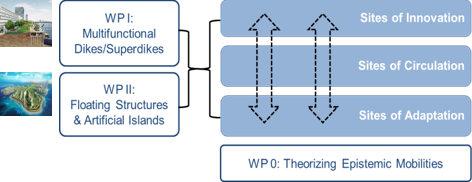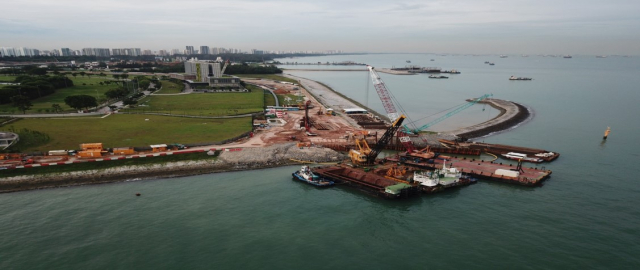Objective
To analyse communicative channels, flows and fixities that shape how two interrelated adaptation technologies for living with sea level change (i.e. multifunctional dyking, as well as artificial islands and other forms of ‘floating’ design) pattern diverse coastal futures of Jakarta, Metro Manila, and Singapore.
Research Question
How are globalised infrastructural practices for living with/in spite of and for living from ‘sea change’ shaping the contested ways in which coastal cities are envisioned and materialised, at times in uneven and contradictory ways?
Conceptual framework
- Micro-practices of ‘mobility agents’ in the traveling ‘business’ of adaption (Rapoport/Hult, 2017);
- Assemblage approaches (McFarlane/Silver, 2017);
- Affect theory and the anthropology of infrastructures (McKenzie, 2017; Jensen, 2017).
Ethnographic Methods
Participant observation, in-depth interviews, and community transect walking; participatory mapping.
The multi-sited project advances two key conceptual and methodological lines for mobilities research:
a) mid-range theory development on global circuits of urban “speculative futuring” by tracing how infrastructural ideas and technologies are translated, legitimized and contested; b) furthering ongoing work in “follow-the-moving target” methodology.
Project Structure

Link to the Blue Urban website: https://blueurban.org/
Project Partners |
|---|
|
Sustainabililty Research Center (artec), Bremen, Germany University of Bremen, Germany Universitas Indonesia, Indonesia Ateneo de Manila University, Philippines Department of Sociology, National University of Singapore |





